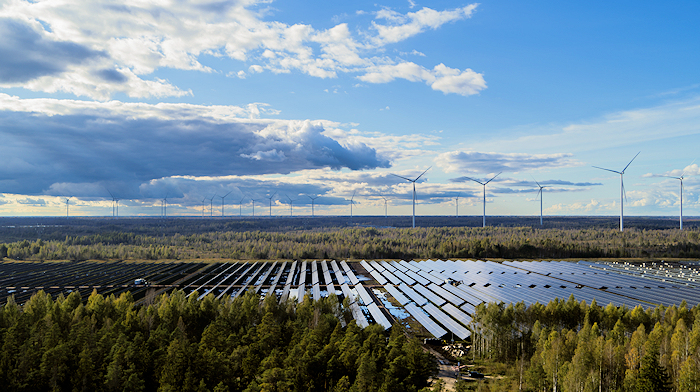
The Sopi Solar Park is operated by Eesti Energía´s subsidiary Enefit Green. Completed in 2025, the plant has a total capacity of 74 MW and a projected annual electricity output of 75 GWh which covers the annual electricity consumption of approximately 22,500 average Estonian households.
Following successful testing by Eesti Energía in cooperation with system operator Elering and technical partner emsys VPP, the Sopi Solar Power Plant was prequalified for the aFRR downregulation market with a capacity of 30 MW and for the mFRR down-regulation market with a capacity of 45 MW.Sopi Solar Power Plant has thus become the largest solar park in the Baltics officially qualified to participate in both the automatic Frequency Restoration Reserve (aFRR) and manual Frequency Restoration Reserve (mFRR) markets.
According to Kristjan Kuhi, Member of the Management Board of Eesti Energia, this achievement marks a significant step in integrating renewable energy into frequency markets, which is crucial for maintaining grid stability in the Baltic electricity system.
“The prequalification of large-scale renewable energy production units for frequency markets proves that wind and solar power plants can also provide frequency reserves –something that has traditionally been the domain of dispatchable power plants,” Kuhi says.
“The Sopi Solar Park is part of our Virtual Power Plant, which integrates various production and consumption assets and enables real-time frequency control.”
“Renewable energy sources like wind and solar need to play a vital role in ensuring grid stability. Enabling the provision of aFRR and mFRR with our Virtual Power Plant in partnership with Eesti Energia represents a major step forward in our dynamically growing presence in the Baltics,” comments Timo Buschmann, Head of Key Account Management at emsys VPP.
According to Rainer Tammus, Head of Renewable Energy Project Development and Implementation at Enefit Green, the prequalification of the Sopi solar park for frequency markets marks a significant milestone for the entire renewable energy sector.
Following the synchronization of the Baltic electricity system with the Continental European frequency area, Estonia – together with Latvia and Lithuania – has taken on the responsibility of maintaining regional balance between electricity generation and consumption. This effort is supported by dispatchable power plants operated by Enefit Power in Estonia, renewable energy assets such as wind and solar parks managed by Enefit Green in Estonia and Lithuania, and Estonia’s first large-scale battery storage facility in Auvere. In addition, advanced digital solutions like the Virtual Power Plant provided by emsys VPP enable the company’s diverse asset portfolio to actively participate in frequency regulation markets.
Participation in frequency markets means that renewable energy production units can help maintain grid frequency stability, which is essential for the reliability of electricity supply and price stability. The more flexible and fast-responding production assets are available on the market, the less there is a need for expensive backup reserves – ultimately helping to keep electricity prices lower.
This also enhances the energy security of the Baltic region by enabling greater reliance on local renewable sources and reducing the need for imports.

